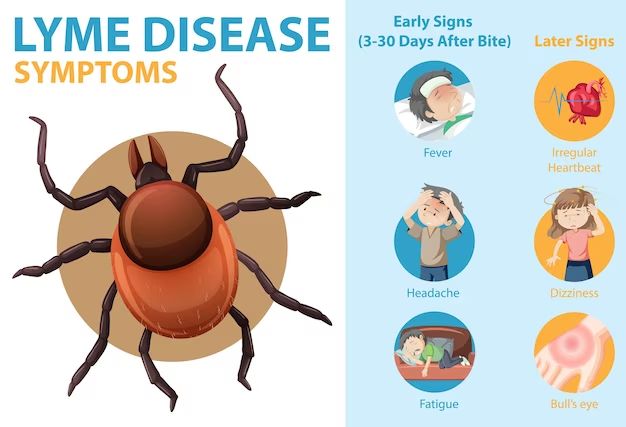Dust mites are tiny bugs that feed on dead skin cells shed by humans and pets. They are present in most homes and can trigger allergic reactions like sneezing, runny nose, itchy eyes, and asthma in sensitive people. Knowing the signs of a dust mite infestation can help you take steps to reduce their numbers and minimize allergy symptoms.
Page Contents
What are the most common signs and symptoms of a dust mite allergy?
Some of the most common signs and symptoms that may indicate a dust mite allergy include:
- Sneezing fits, especially when cleaning or disturbing bedding or upholstered furniture
- Runny nose and nasal congestion, sometimes accompanied by postnasal drip
- Red, itchy, watery eyes
- Wheezing and shortness of breath
- Coughing spells
- Itchy skin rashes like eczema
- Worsening of asthma symptoms
These signs are most noticeable when a person first wakes up in the morning and are exposed to dust mites accumulated in bedding overnight. Symptoms may also worsen during cleaning activities that stir up dust mite allergens in upholstered furniture, carpets, curtains, and stuffed toys.
Where are dust mites commonly found in homes?
Dust mites thrive in warm, humid environments. Some common dust mite hot spots include:
- Beds – mattresses, pillows, bedcovers, sheets
- Upholstered furniture – couches, armchairs, cushions
- Carpets and rugs
- Curtains and drapes
- Clothing and stuffed toys
- Car interiors
Dust mites feed on flakes of dead skin, so they proliferate in places where humans shed skin cells. Beds contain an abundance of shed skin cells and provide warmth and humidity. Over millions of years, dust mites have evolved to thrive in mattresses.
How can you check for dust mites in your bed?
It’s easy to check for dust mite infestation in your bed. Some simple steps include:
- Use a flashlight to examine mattress seams and crevices for any dark specks or clumps, which may be dried dust mite feces.
- Take a piece of clear packing tape and dab it on your mattress, then examine the tape under a microscope for any dust mites or feces.
- Wipe a white cloth over the surface of mattresses and pillows. Look for any dark stains, which may indicate dust mite feces and skin cell debris.
- Look for tiny white or tan colored shells, which are the cast-off skins and casings of dust mites.
A visual inspection may reveal signs of dust mites. However, the definitive way to check for dust mites is to send a mattress sample to a lab for analysis.
How do labs analyze for dust mites?
Labs use specialized techniques to accurately detect and quantify dust mite populations on mattresses or other samples. Common methods include:
- Microscopic analysis – Samples are examined under a microscope to visually identify and count dust mites and their feces.
- Acid extraction – Allergens are dissolved from the sample using acids. The liquid is then analyzed for specific dust mite proteins.
- ELISA assay – The extracted sample liquid undergoes an enzyme-linked immunosorbent assay to detect dust mite allergens.
- PCR analysis – DNA analysis using polymerase chain reaction can identify dust mite genetic material in a sample.
These laboratory techniques allow accurate quantification of dust mites down to 1 μg of allergen per gram of dust. ELISA and PCR assays can even detect dust mite allergens in the air.
What dust mite levels cause allergies?
Studies have come up with threshold levels for dust mite exposure that trigger allergies in sensitized people:
| Dust mite levels | Effects |
|---|---|
| 2 μg/g dust | Allergy symptoms in sensitized individuals |
| 10 μg/g dust | Allergy symptoms in most sensitized individuals |
| 100 μg/g dust | Allergy symptoms in all sensitized people |
| 1000 μg/g dust | Allergy symptoms even in non-sensitized people |
Laboratory analysis of dust samples from homes of allergy sufferers often shows dust mite levels exceeding 1000 μg/g. Reducing mite levels below 10 μg/g is recommended to minimize allergies.
How can you reduce dust mites at home?
You can take several steps to reduce dust mites in your home environment:
- Encase mattresses and pillows in dust mite covers.
- Wash bedding weekly in hot water (at least 130°F) to kill mites.
- Replace carpets with hard flooring.
- Remove fabric curtains and upholstered furniture.
- Use a dehumidifier to keep indoor humidity below 50%.
- Use a HEPA filter vacuum when cleaning.
- Remove stuffed toys from beds and wash them weekly.
These steps help reduce dust mite populations by limiting their access to skin cells, eliminating humidity, and removing the places they thrive. This can provide relief for dust mite allergy sufferers.
Conclusion
Suspect dust mites if allergy symptoms worsen indoors, especially in the bedroom. Check mattresses, bedding, upholstered furniture and carpets for signs of mites. Lab testing can confirm and quantify infestation. Reduce mites by encasing bedding, lowering humidity, and eliminating their favorite hangouts. With some diligence, you can minimize exposure to these common household allergens.
